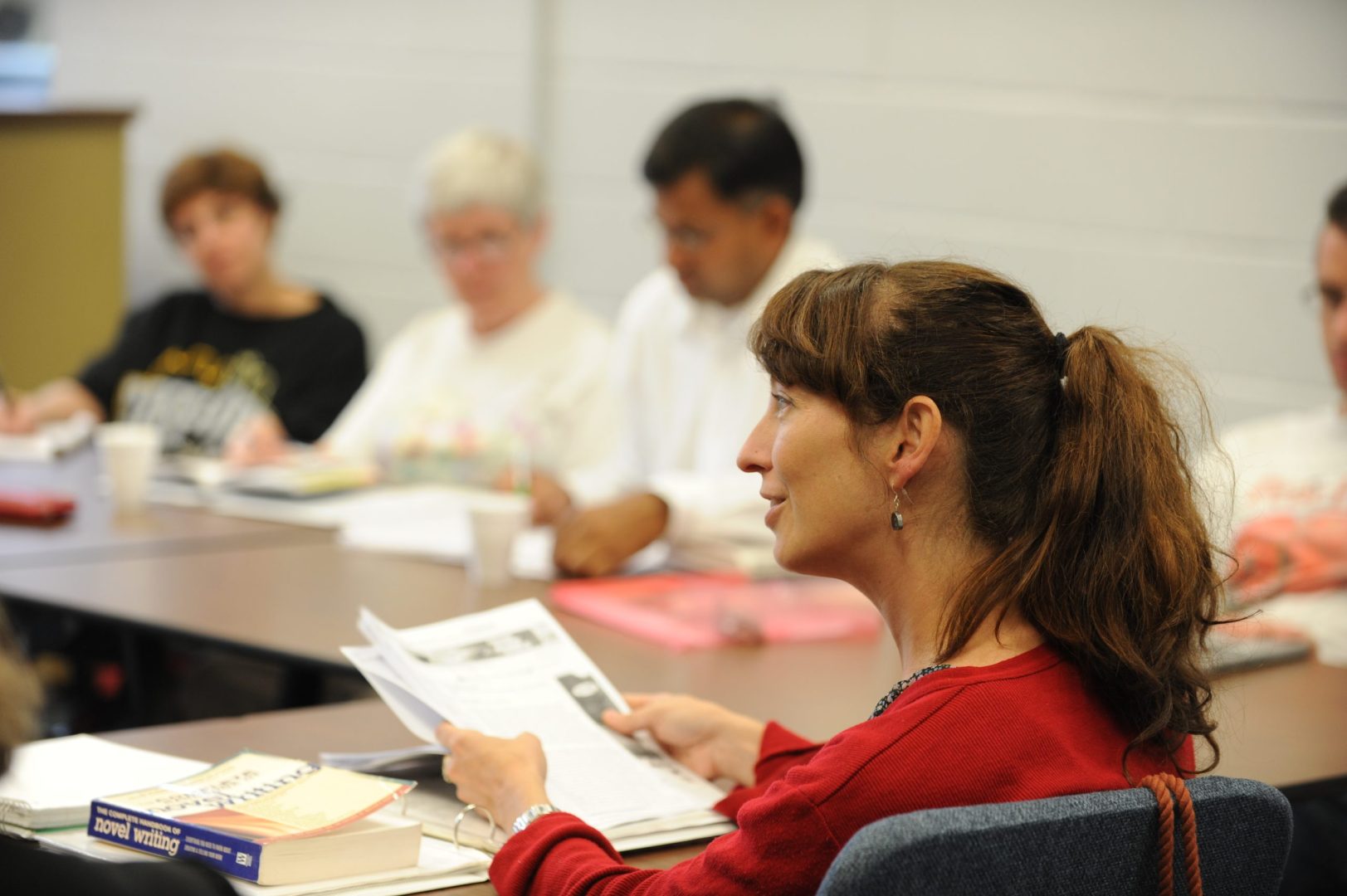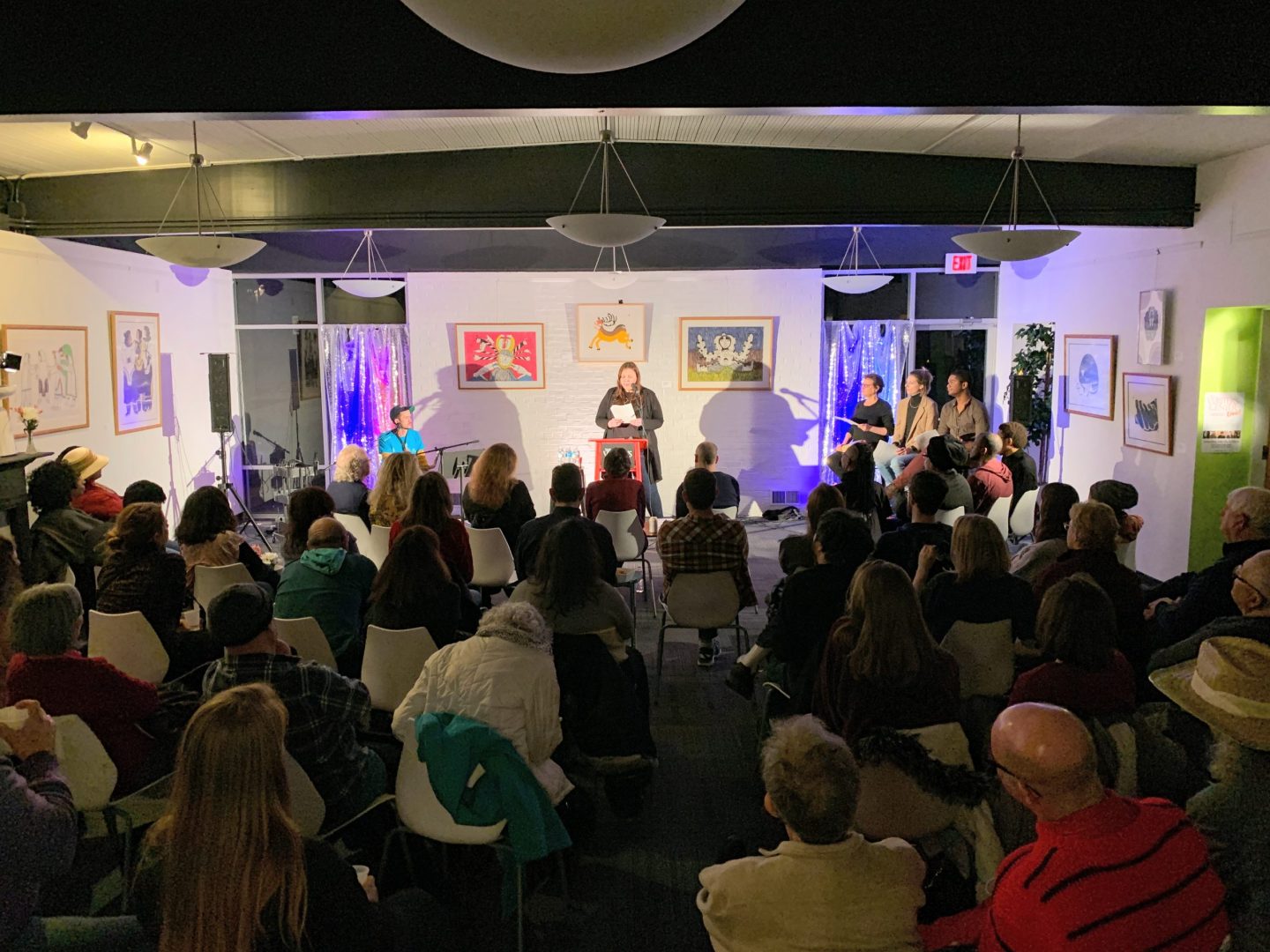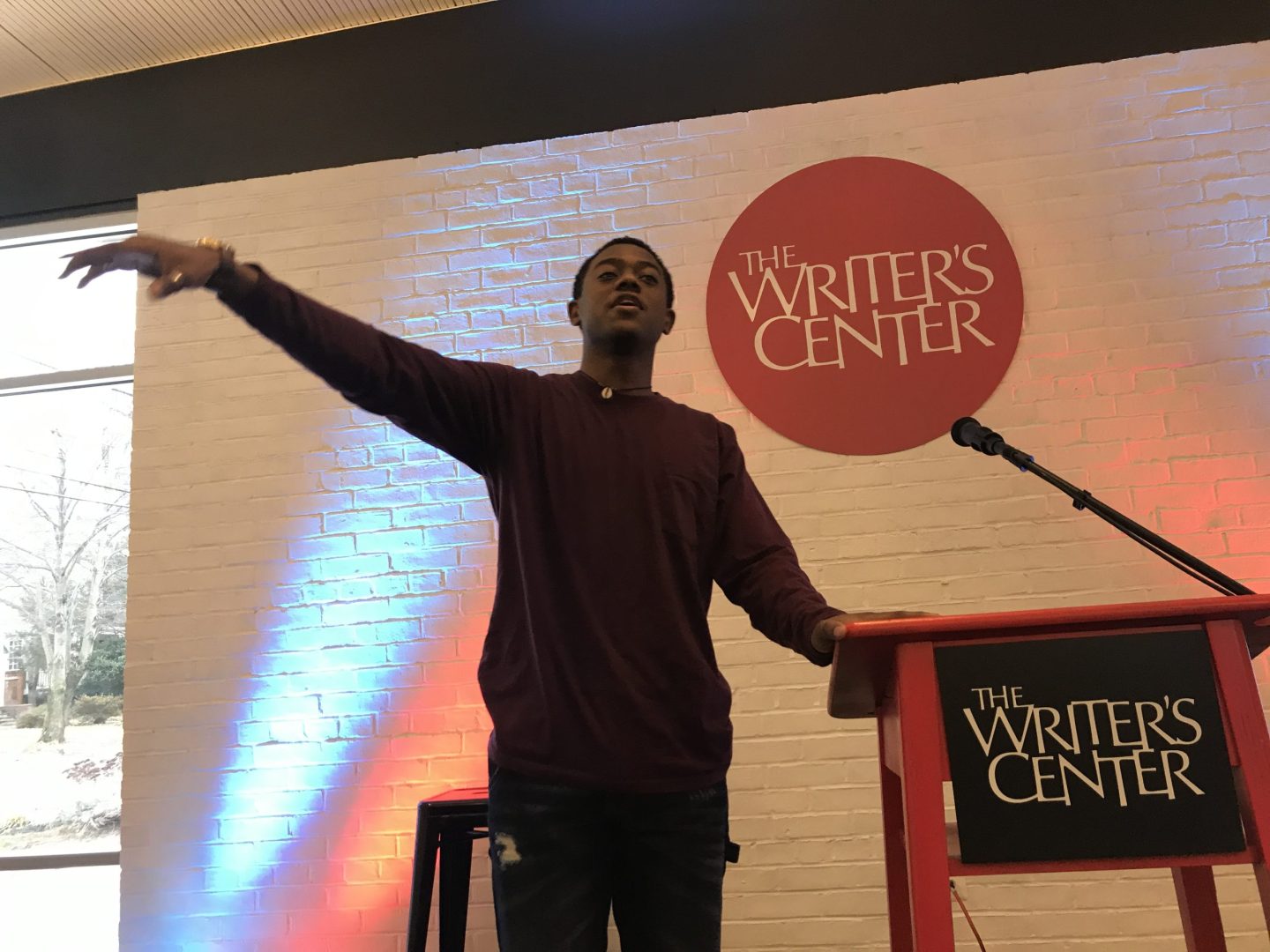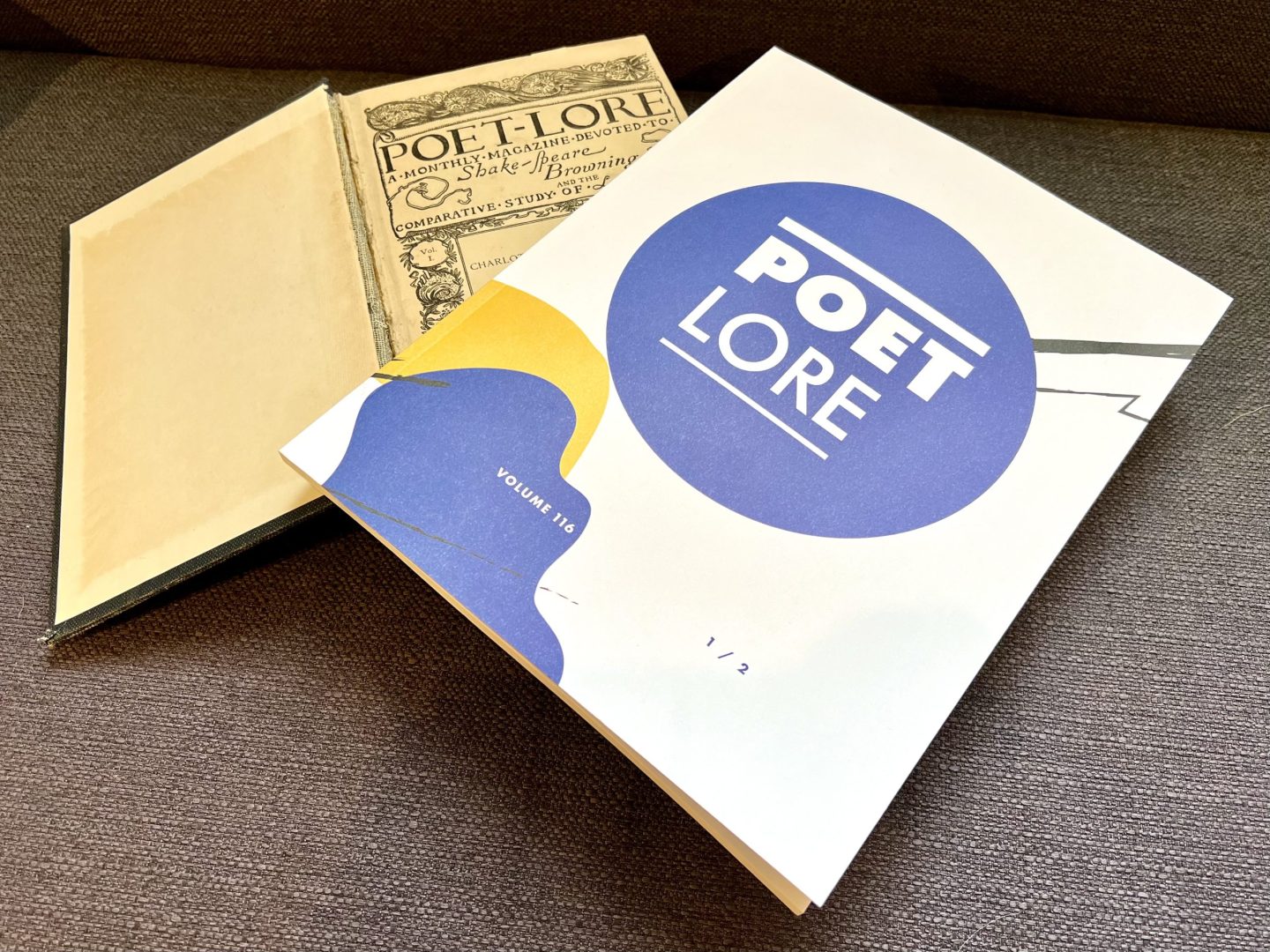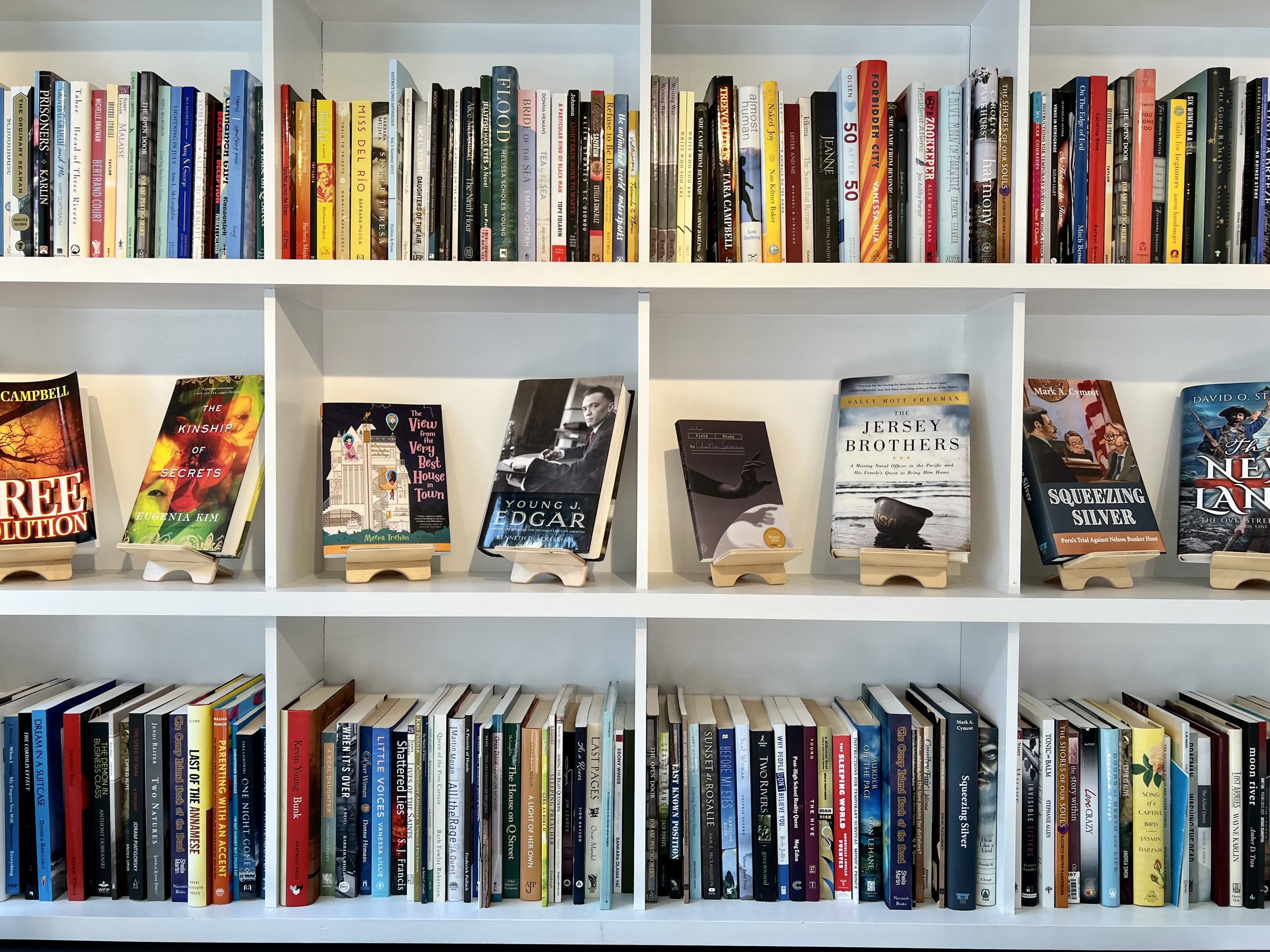Fellowships Opportunities for Writers
The Writer’s Center has developed a list of writing fellowships for your reference.
Please note that this page is a reference for writers. We do not partner with the following organizations. Also, these opportunities are subject to change, so be sure to visit the websites for more information.
The Writer’s Center Compass Fellowship
What it is: Our renewed fellowship program will introduce a new writer each year to our writing family, to help guide them along the next steps on their path, with $1000 in credits toward any TWC workshops within a two-year period, a $300 cash stipend, and more.
Who’s it for: Applicants must be local in the DMV area and be able to travel to Bethesda.
The Writer’s Center says: If you’re a writer or an aspiring writer looking for where to go next, The Writer’s Center Compass Fellowship is a great place to start!
National Endowment for the Arts Creative Writing Fellowships
What it is: The National Endowment for the Arts Creative Writing Fellowships offer $25,000 grants in fiction, creative nonfiction, and poetry to enable creative writers to set aside time for writing, research, travel, and general career advancement.
Who’s it for: To be eligible, you have to be a citizen of the United States, you can’t have received two or more fellowships from the National Endowment from the Arts, you can’t have received the creative writing fellowship on or after January 1, 2014, and you must have published a book within the last seven years.
The Writer’s Center says: This is the nationally recognized fellowship that writers are vying for every year. Note that the genres alternate each year, with prose fellowships offered in odd years, and poetry fellowships in even years.
Mother Jones’s Ben Bagdikian Fellowship
What it is: Mother Jones offers an annual fellowship program that is “a crash course in investigative journalism.” The Ben Bagdikian Fellowship is a full-time position lasting approximately one year, beginning on the first Monday in December and running through late November. Fellows receive a $3,250 monthly stipend.
Who’s it for: Those who are still in school or are only available part-time are not eligible, nor can fellowships be used for course credit. Because the first two weeks of the fellowship consist of intensive group trainings, all applicants, without exception, must be prepared to start on the first Monday in December. Mother Jones is not able to furnish work visas for applicants from outside the United States.
The Writer’s Center says: This is a demanding position that will enable participants to get significant experience in investigative journalism.
Provincetown Fine Arts Center Fellowship
What it is: The Provincetown Fine Arts Center offers 20 seven-month residencies each year to emerging visual artists, fiction writers, and poets, each of whom receive an apartment, a studio (for visual artists), and a monthly stipend of $1,000 plus an exist stipend. Residencies run from October 1 through April 30.
Who’s it for: Visual artists, fiction writers, and poets.
The Writer’s Center says: This is one of the only non-MFA programs that support writers and artists for more than a month at a time.
The Kenyon Review Fellowship
What it is: The Kenyon Review offers a two-year fellowship that comes with a $35,000+ stipend and health benefits that will enable the fellow to undertake a significant writing project; teach one class per semester in the English department of Kenyon College; assist with creative and editorial projects for the Kenyon Review; and participate in the cultural life of Kenyon College.
Who’s it for: Applicants must possess an MFA or PhD in creative writing, English literature, or comparative literature. They must have experience teaching creative writing and/or literature at the undergraduate level.
The Writer’s Center says: This is a fantastic opportunity for early-career writers to receive time and space to write, as well as teaching experience.
The Loft’s McKnight Artist Fellowship
What it is: The Loft presents five $25,000 awards annually to accomplished Minnesota writers and spoken word artists. Four awards alternate annually between creative prose (fiction and creative nonfiction) and poetry/spoken word. The fifth award is presented in children’s literature and alternates annually for writing for ages eight and under and writing for children older than eight.
Who’s it for: Applicants must have been legal residents of Minnesota for the 12 months prior to the application deadline and must currently reside in Minnesota.
The Writer’s Center says: This is a generous grant that will enable Minnesota writers to produce more creative work.
Bucknell Stadler Fellowship
What it is: Bucknell University offers a 10-month fellowship that provides a stipend of at least $33,000 and health insurance. The program offers two distinct tracks: one a fellowship in literary editing and a fellowship in literary arts administration. Applicants can apply to one or the other. Both fellowships are designed to balance the development of professional skills with time to complete a first book of poems. Fellows serve for 20 hours each week during the academic year. The balance of the fellows’ time is reserved for writing.
Who’s it for: Poets who have recently received an MFA or MA in poetry.
The Writer’s Center says: If you are an early career poet and you aren’t interested in teaching, this is a noteworthy opportunity to get significant experience with literary arts administration or literary editing while receiving time and space to work on a poetry collection.
Nieman Fellowships
What it is: Each year, the Nieman Foundation awards paid fellowships of $75,000 to up to 24 journalists working in print, broadcast, digital, and audiovisual media. Those selected for the program spend two full semesters at Harvard auditing classes; they are also able to audit classes at other local universities including MIT and Tufts. The Nieman Foundation also provides some financial support for health insurance and childcare. Fellows are not eligible for health care insurance through Harvard University.
Who’s it for: All applicants for Nieman Fellowships must be working journalists with at least five years of full-time media experience. During the two years prior to applying, an applicant should not have participated in a fellowship lasting four months or longer.
The Writer’s Center says: This is a generous fellowship that enables journalists to deepen their knowledge in an area of interest or several areas of interest.
James Jones Fellowship
What it is: The James Jones First Novel Fellowship, in the amount of $10,000, is awarded annually to an American writer of a novel-in-progress who has not previously published a novel. The Fellowship is co-sponsored by the James Jones Literary Society and the Maslow Family Graduate Program in Creative Writing of Wilkes University.
Who’s it for: An American writer who has never published a novel. This includes self-published novels.
The Writer’s Center says: This award provides invaluable monetary support for novelists with a work in progress.
The Hodder Fellowship
What it is: The Hodder Fellowship will be given to artists and writers of exceptional promise to pursue independent projects at Princeton University during the academic year. An $86,000 stipend is provided for this 10-month appointment as a Visiting Fellow; no formal teaching is involved.
Who’s it for: Composers, choreographers, performance artists, visual artists, writers, translators, or other kinds of artists. Most successful Fellows have published a book or have similar achievements in their own fields.
The Writer’s Center says: Unlike fellowships that involve teaching or literary administration, this is a generous award for artists solely pursuing independent projects.
PEN America Emerging Voices Fellowship
What it is: The Emerging Voices Fellowship provides a virtual five-month immersive mentorship program for early-career writers from communities that are traditionally underrepresented in the publishing world. The program is committed to cultivating the careers of Black writers, and serves writers who identify as Indigenous, persons of color, LGBTQ+, immigrants, writers with disabilities, and those living outside of urban centers.
Who’s it for: Underrepresented early-career writers.
The Writer’s Center says: This program lifts up writers who deserve recognition, demystifying the publishing process and introducing them to editors, agents, and publishers.
Persephone Miel Fellowship
What it is: The Pulitzer Center on Crisis Reporting will provide a grant of $5,000 for a reporting project on topics and regions of global importance, with an emphasis on issues that have gone unreported or underreported in the mainstream media.
Who’s it for: The Persephone Miel Fellowships are open to all journalists, writers, photographers, radio producers or filmmakers, staff journalists, as well as freelancers and media professionals outside the U.S. and Western Europe who are seeking to report from their home country but would like to broaden the reach of their reporting by publishing it in international outlets. Applicants must be proficient in English.
The Writer’s Center says: This grant gives a journalist an invaluable opportunity to explore an issue that goes unreported or underreported in mainstream media.
Wallace Stegner Fellowship
What it is: Stanford offers ten two-year fellowships each year, five in fiction and five in poetry. All the fellows in each genre convene weekly in a 3-hour workshop with faculty. Fellowships include a living stipend. Fellows’ tuition and health insurance are paid for by the Creative Writing Program.
Who’s it for: Candidates must live close enough to Stanford to be able to attend workshops, readings, and events.
The Writer’s Center says: This is a non-degree granting opportunity for a writer to get regular feedback from established poets and fiction writers.
Patrick Henry Writing Fellowship
What it is: The Center’s Patrick Henry History Fellowship includes a $45,000 stipend, health benefits, faculty privileges, a book allowance, and a nine-month residency (during the academic year) in a historic 18th-century house in Chestertown, Md.
Who’s it for: Applicants should have a significant project currently in progress — a book, film, oral history archive, podcast series, museum exhibition, or similar work. The project should address the history and/or legacy – broadly defined – of the U.S. founding era and/or the nation’s founding ideas. It might focus directly on early America, or on the myriad ways the questions that preoccupied the nation’s founding generation have shaped America’s later history. Work that contributes to ongoing national conversations about America’s past and present, with the potential to reach a wide public, is particularly sought.
The Writer’s Center says: This fellowship enables applicants to deeply explore a particular historical topic of Washington College’s choosing.
Scripps Fellowship
What it is: This is a non-degree, two-semester program that allows fellows to take environmental journalism classes at the University of Colorado Boulder.
Who’s it for: The fellowship is open to full-time journalists working in any medium who are interested in deepening and broadening their knowledge of environmental issues. It is aimed at outstanding journalists committed to a career in professional journalism. Applicants must have a minimum of five years of full-time professional journalism experience and have completed an undergraduate degree.
The Writer’s Center says: This is a fantastic opportunity for journalists who are interested in environmental issues.
Wisconsin Institute for Creative Writing Fellowship
What it is: The Wisconsin Institute for Creative Writing offers up to five internationally competitive nine-month fellowships each year. Typically, we award two fiction fellowships (the James C. McCreight Fiction Fellowship and the Carol Houck Smith Fiction Fellowship), and two poetry fellowships (the Jay C. and Ruth Halls Poetry Fellowship and the Ronald Wallace Poetry Fellowship). Additionally, the Institute offers one third-year MFA fellowship — the Hoffman-Halls Emerging Artist Fellowship — to a current student of UW-Madison, through a closed competition. Each of these fellowships carries with it a stipend of at least $39,000 paid in 9 equal installments beginning October 1, generous health benefits, and a one-course-per-semester teaching assignment in undergraduate creative writing.
Who’s it for: Applicants who have published only one full-length collection of creative writing; unpublished applicants are also eligible.
The Writer’s Center says: This fellowship gives a poet and fiction writer time and space to write, as well as teaching experience.
Grub Street’s Emerging Writer Fellowship
What it is: The Emerging Writer Fellowship aims to develop new, exciting voices by providing three writers per year tuition-free access to GrubStreet’s classes and Muse & the Marketplace conferences.
Who’s it for: Anyone over the age of 18 who demonstrates ability and passion for writing is eligible.
The Writer’s Center says: Much like The Writer’s Center Compass Fellowship, GrubStreet’s program enables writers to advance their craft while eliminating the financial barriers to entry.
Emory University Creative Writing Fellowship
What it is: Emory University offers two-year fellowships in fiction, poetry, and playwriting. The teaching load is 2-1, and the fellowship comes with a $45,000 salary and health benefits.
Who’s it for: Anyone who has received an MFA or Ph.D. in the last five years, and who has creative writing teaching experience, a record of publication, and a first book published or underway.
The Writer’s Center says: This is an opportunity for recent graduates of a creative writing program to gain teaching experience as well as space and time to work on their creative projects.
